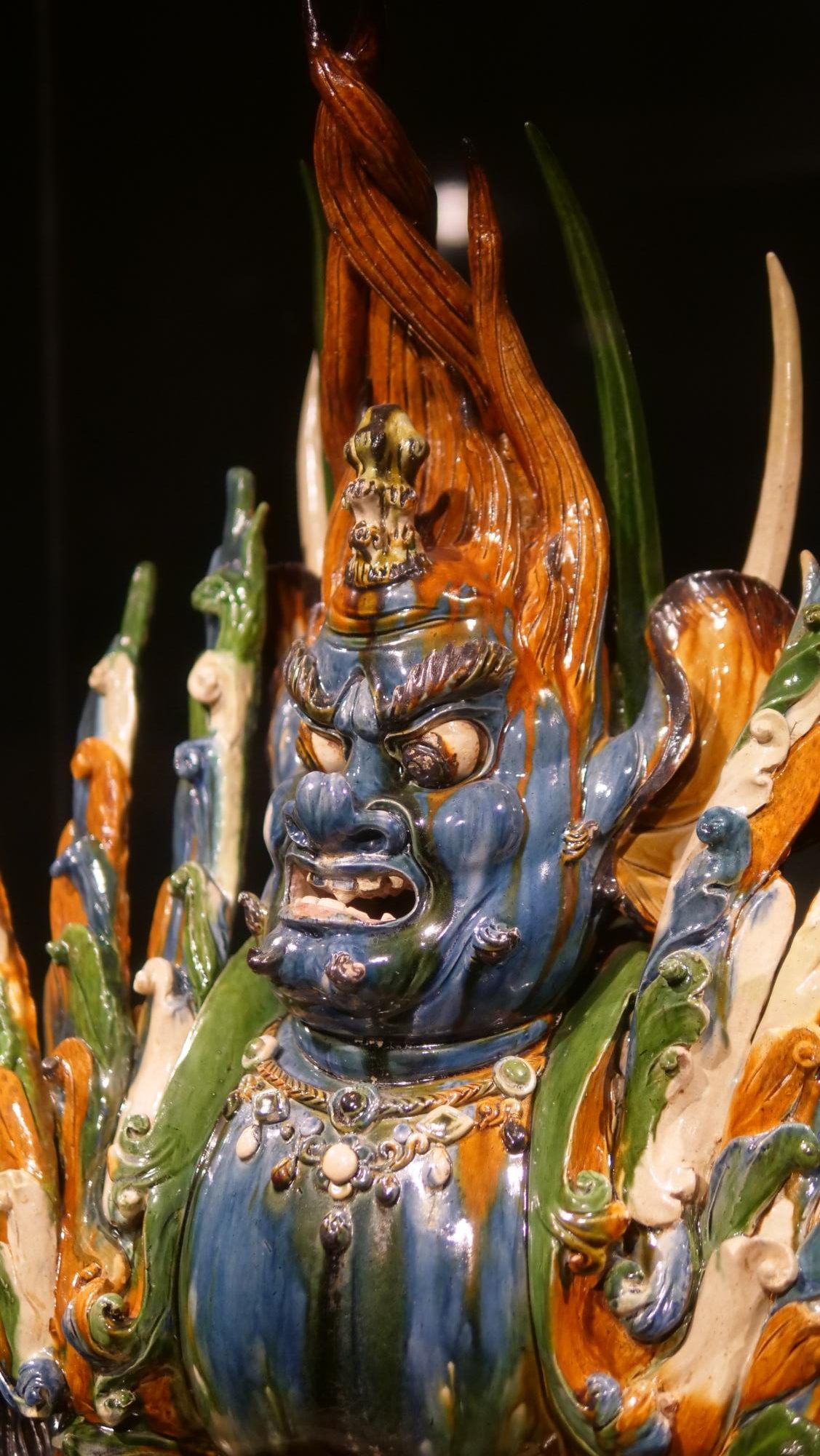This past September, the Cleveland Museum of Art unveiled “Demons, Ghosts and Goblins in Chinese Art,” a new exhibit featuring 20 Chinese artworks depicting monsters and other supernatural creatures. This unique exhibition showcases the duality of monsters in Buddhist, Daoist and Confucian belief systems, portraying them as both terrifying creatures and protectors against evil. This exhibit is located in the Julia and Larry Pollock Focus Gallery.
A focal point of this exhibit is the piece “Searching the Mountains,” which has been placed on display for the first time ever. Originally created as a handscroll of ink on silk, this piece required deep restoration as a result of degradation due to light exposure. Using digital technology, the museum’s restoration team was able to create a replica, allowing visitors to appreciate the detailed artwork. This piece is a depiction of a Daoist legend in which the god Erlang ends the floods devastating the Sichuan province of China. He battles a dragon—among other fearsome monsters—bringing peace and safety to his people. This piece is one of only 11 known depictions of Erlang dating back to the 900s.
Another intriguing piece consists of two glazed earthenware pieces called Tomb Guardians. Painted with a traditional three-color glaze, these monsters served not only to protect the deceased soul but also to keep it from wandering. Like many of the other demons in this exhibit, these “qitou,” or earth spirits, are chimeric. They combine the strongest parts of several creatures—claws, antlers and hooves—to be as powerful as possible. Although this piece is from the 700s, it is remarkably well-preserved with vibrant colors and minimal restorations.
One of my personal favorite pieces in this exhibit is the depiction of Zhong Kui, a demon king and Taoist deity. Originally a scholar, Zhong Kui was denied the highest academic honors by the emperor because of his disfigured appearance. In his grief, Zhong Kui committed suicide. After divine judgment in the underworld, Zhong Kui was granted the title of “King of Ghosts” due to his intelligence and unfulfilled potential. As a ghost, Zhong Kui maintained order among malevolent spirits, commanding an army to fight evil and hunt demons. The artwork—created using finger painting to emphasize his rough, powerful nature—depicts Zhong Kui with two horns to detect troublemaking demons nearby. This piece depicts demons and ghosts as powerful protectors against evil, contrary to popular negative connotations around the words “demon” and “ghost.”
Combining these roles of monsters in Chinese art, the piece “Shakyamuni under the Bodhi Tree” shows Buddha Shakyamuni seated on the backs of three horned demons. While Shakyamuni represents enlightenment from the Buddhist cycle of birth, death and rebirth, the monsters beneath him serve two purposes; their presence physically supports his meditation, while Shakyamuni’s weight keeps them subdued. This piece symbolizes the idea that evil cannot be entirely eradicated but must be controlled in order to coexist peacefully.
With a variety of media, cultural symbols and historic settings, this exhibit challenges the usual view of monsters as sources of fear by showing how, in Chinese traditions, these creatures can also be protectors, maintainers of balance and sources of spiritual strength. From the Tomb Guardians to the demons supporting the Buddha’s meditation, each piece invites visitors to reconsider how evil is represented—not just as chaos, but as something necessary for order and peace. The exhibit serves as a powerful reminder that in both art and life, good and evil aren’t always as clear-cut as we might think. Instead, they’re intertwined in ways that help us understand strength, vulnerability and the importance of control.


